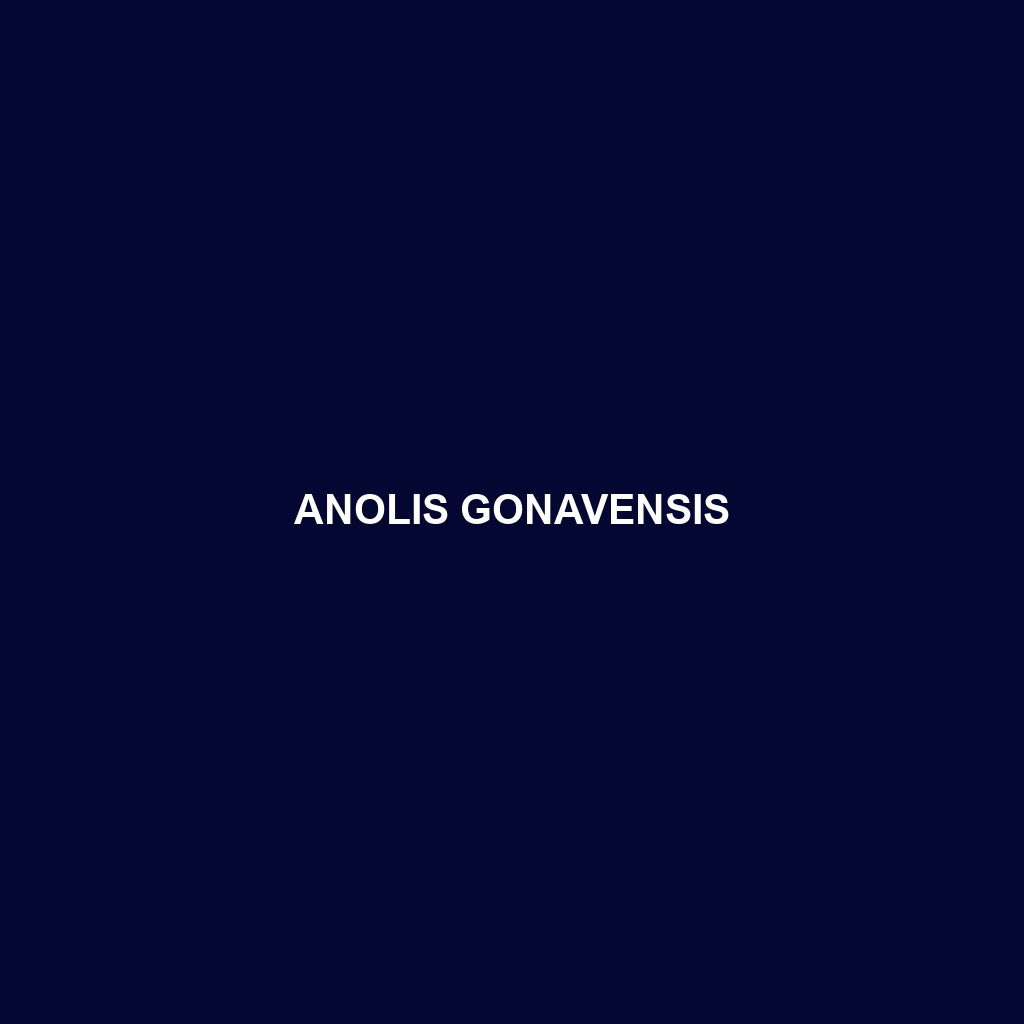Anolis gonavensis: Species Overview
Common Name: Anolis gonavensis
Scientific Name: Anolis gonavensis
Habitat
Anolis gonavensis is primarily found in the tropical forests of the Caribbean, specifically on the islands of Gonave and La Tortue in Haiti. These lizards prefer habitats characterized by dense vegetation, including shrubs and trees, which provide ample cover and perches for their arboreal lifestyle. The humid and warm climate of these regions is ideal for their survival and reproduction.
Physical Characteristics
This species typically measures around 5 to 7 inches in length, including its long, slender tail. Anolis gonavensis displays a vibrant green coloration that aids in camouflage among the leaves of its natural habitat. Notably, males are distinguished by their larger size and prominent dewlap, which they expand during mating displays to attract females. Their sharp claws facilitate climbing on various surfaces, enabling agile movements in the trees.
Behavior
Anolis gonavensis exhibits both diurnal and territorial behaviors, often seen basking in sunlight or defending its territory against rivals. During mating seasons, males engage in elaborate displays to attract females, showcasing their dewlaps and performing push-ups. These lizards are also known for their agility and quick reflexes, allowing them to evade predators effectively.
Diet
The diet of Anolis gonavensis primarily consists of small insects and invertebrates, making them essential predators in their ecosystem. They actively hunt for ants, beetles, and other arthropods, utilizing their sharp eyesight and swift tongue to capture prey. Their feeding habits contribute to the control of insect populations in their habitat.
Reproduction
Anolis gonavensis breeds during the warmer months, typically laying one to two eggs per clutch in hidden locations within leaf litter or soil. The incubation period lasts around 6 to 8 weeks, with hatchlings emerging as miniature versions of adults. Mating rituals often involve male displays of dominance, which can include head-bobbing and dewlap extension.
Conservation Status
The current conservation status of Anolis gonavensis is classified as vulnerable due to habitat loss from deforestation and human encroachment. Ongoing conservation efforts are necessary to preserve their natural habitats and ensure the survival of this unique lizard species.
Interesting Facts
Did you know that Anolis gonavensis is part of a larger family of lizards known as anoles, which are renowned for their color-changing abilities? This adaptability not only helps in camouflage but also plays a vital role in social interactions among individuals.
Role in Ecosystem
Anolis gonavensis plays a crucial role in its ecosystem by acting as both predator and prey. By controlling insect populations, these lizards help maintain the ecological balance in their habitats. Additionally, they serve as a food source for larger predators, thereby contributing to the energy flow within the food web of tropical forests.
